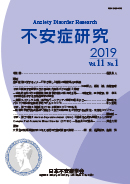Volume 11, Issue 1
Displaying 1-9 of 9 articles from this issue
- |<
- <
- 1
- >
- >|
Foreword
-
2019Volume 11Issue 1 Pages 1
Published: November 30, 2019
Released on J-STAGE: January 04, 2020
Download PDF (134K)
Reviews
-
2019Volume 11Issue 1 Pages 2-12
Published: November 30, 2019
Released on J-STAGE: January 04, 2020
Download PDF (497K) -
2019Volume 11Issue 1 Pages 13-23
Published: November 30, 2019
Released on J-STAGE: January 04, 2020
Download PDF (375K) -
2019Volume 11Issue 1 Pages 24-34
Published: November 30, 2019
Released on J-STAGE: January 04, 2020
Download PDF (498K) -
2019Volume 11Issue 1 Pages 35-46
Published: November 30, 2019
Released on J-STAGE: January 04, 2020
Download PDF (1076K) -
2019Volume 11Issue 1 Pages 47-51
Published: November 30, 2019
Released on J-STAGE: January 04, 2020
Download PDF (393K) -
2019Volume 11Issue 1 Pages 52-58
Published: November 30, 2019
Released on J-STAGE: January 04, 2020
Download PDF (475K)
Original Article
-
2019Volume 11Issue 1 Pages 59-69
Published: November 30, 2019
Released on J-STAGE: January 04, 2020
Download PDF (614K)
-
2019Volume 11Issue 1 Pages 70
Published: November 30, 2019
Released on J-STAGE: January 04, 2020
Download PDF (65K)
- |<
- <
- 1
- >
- >|
